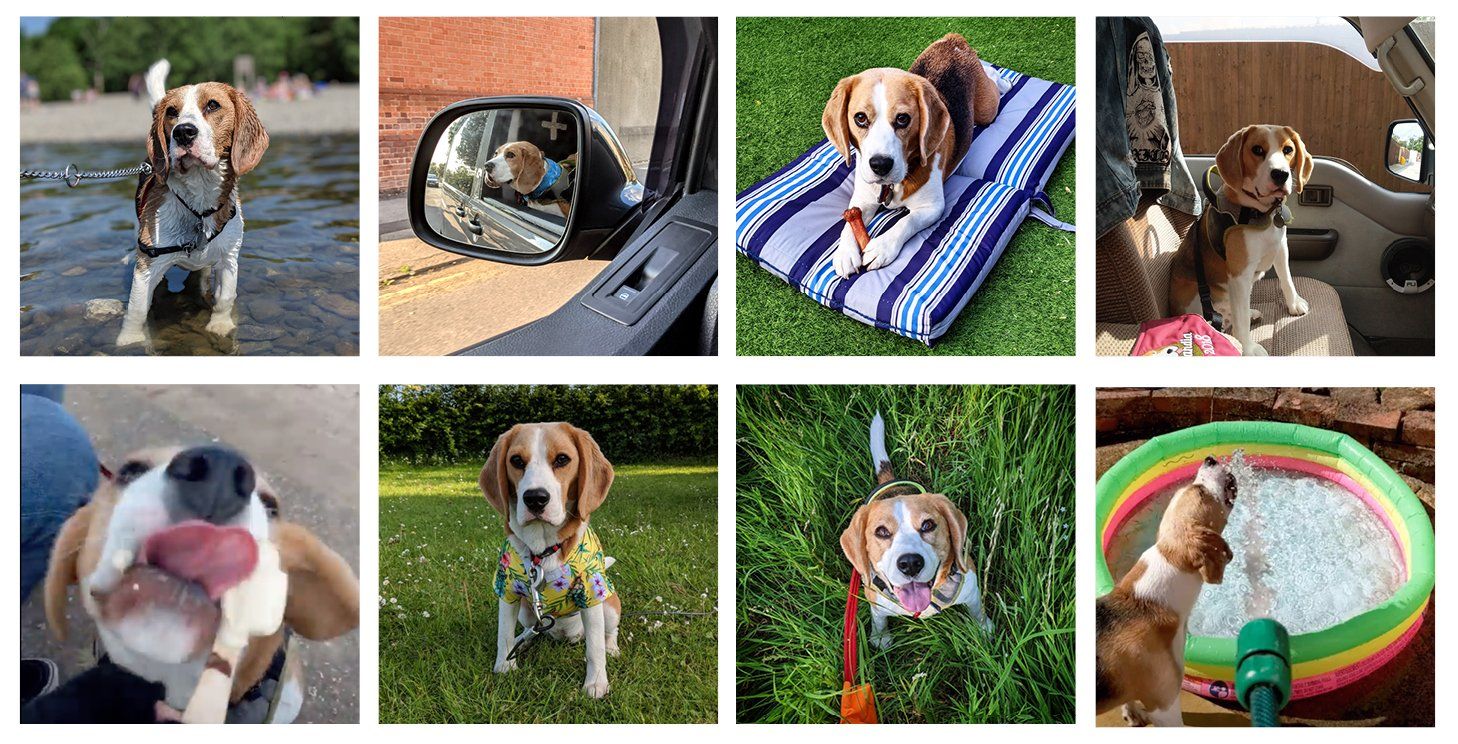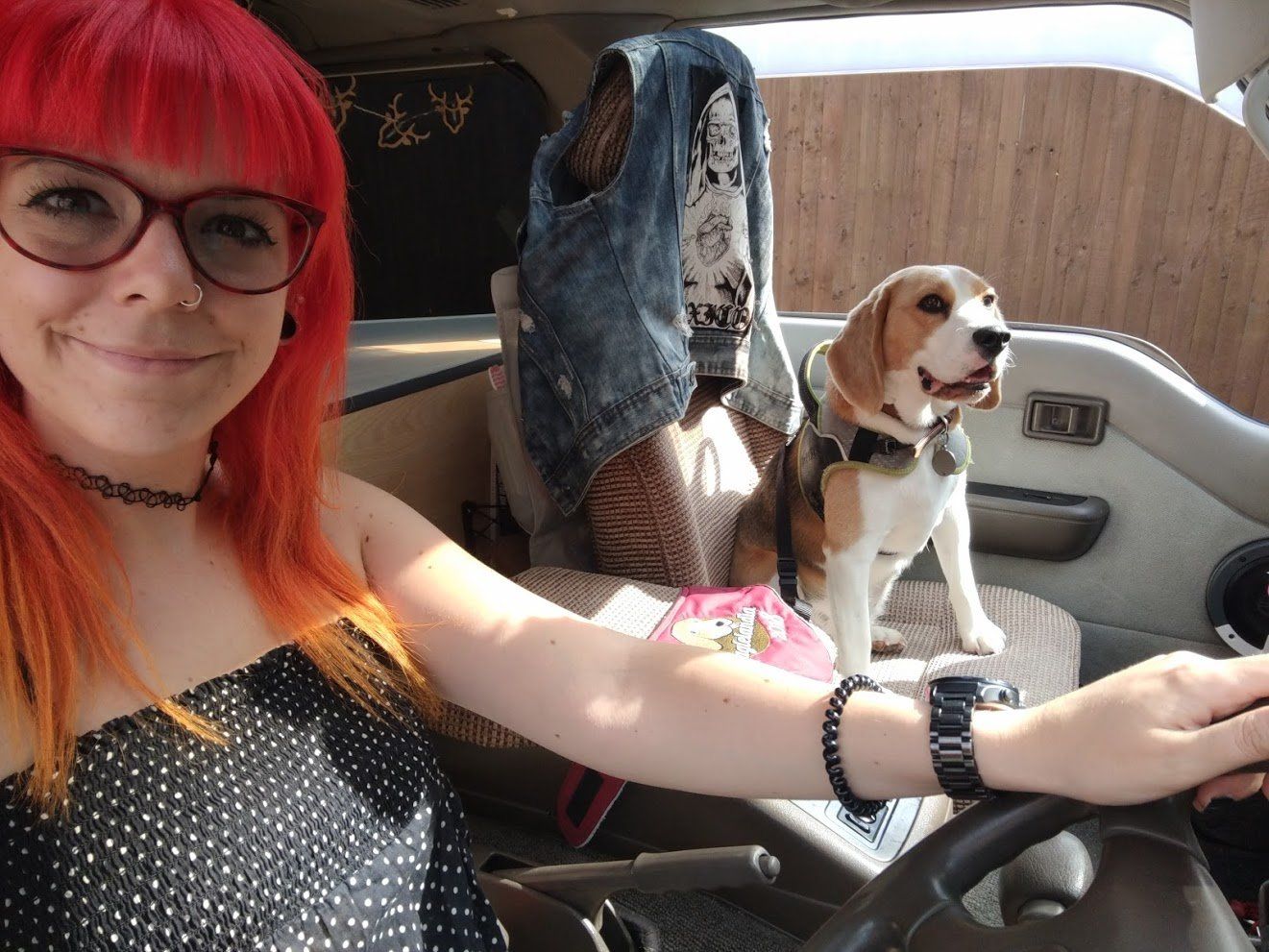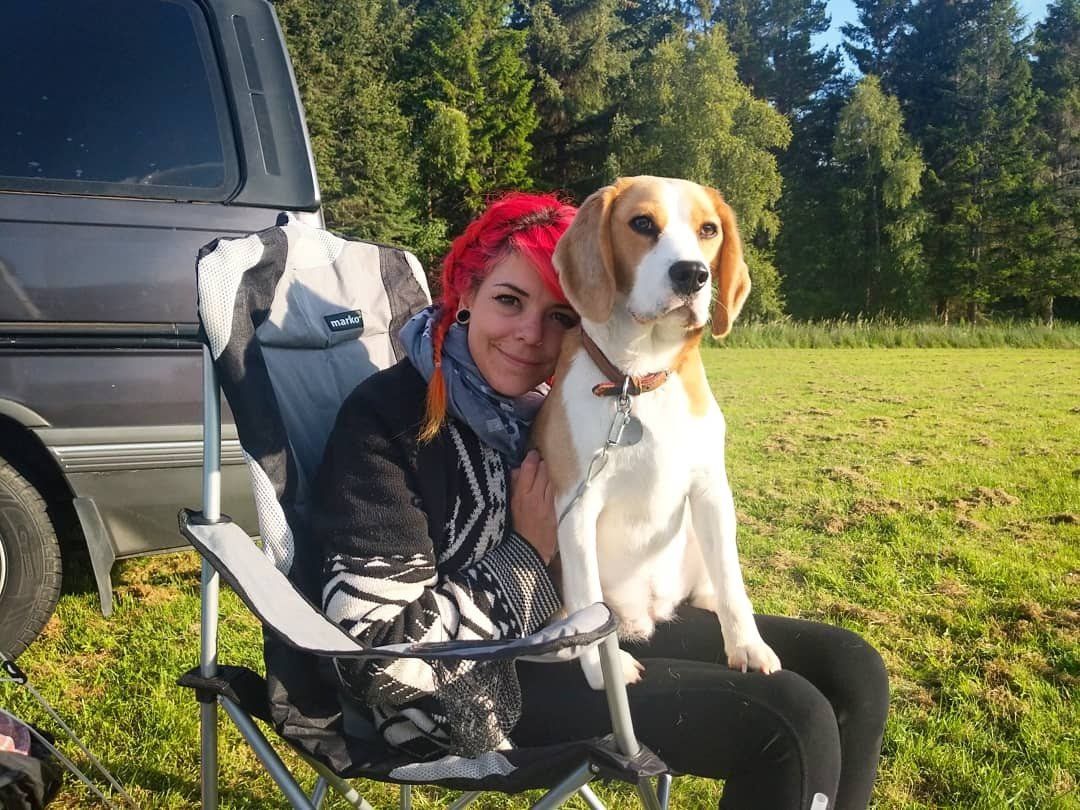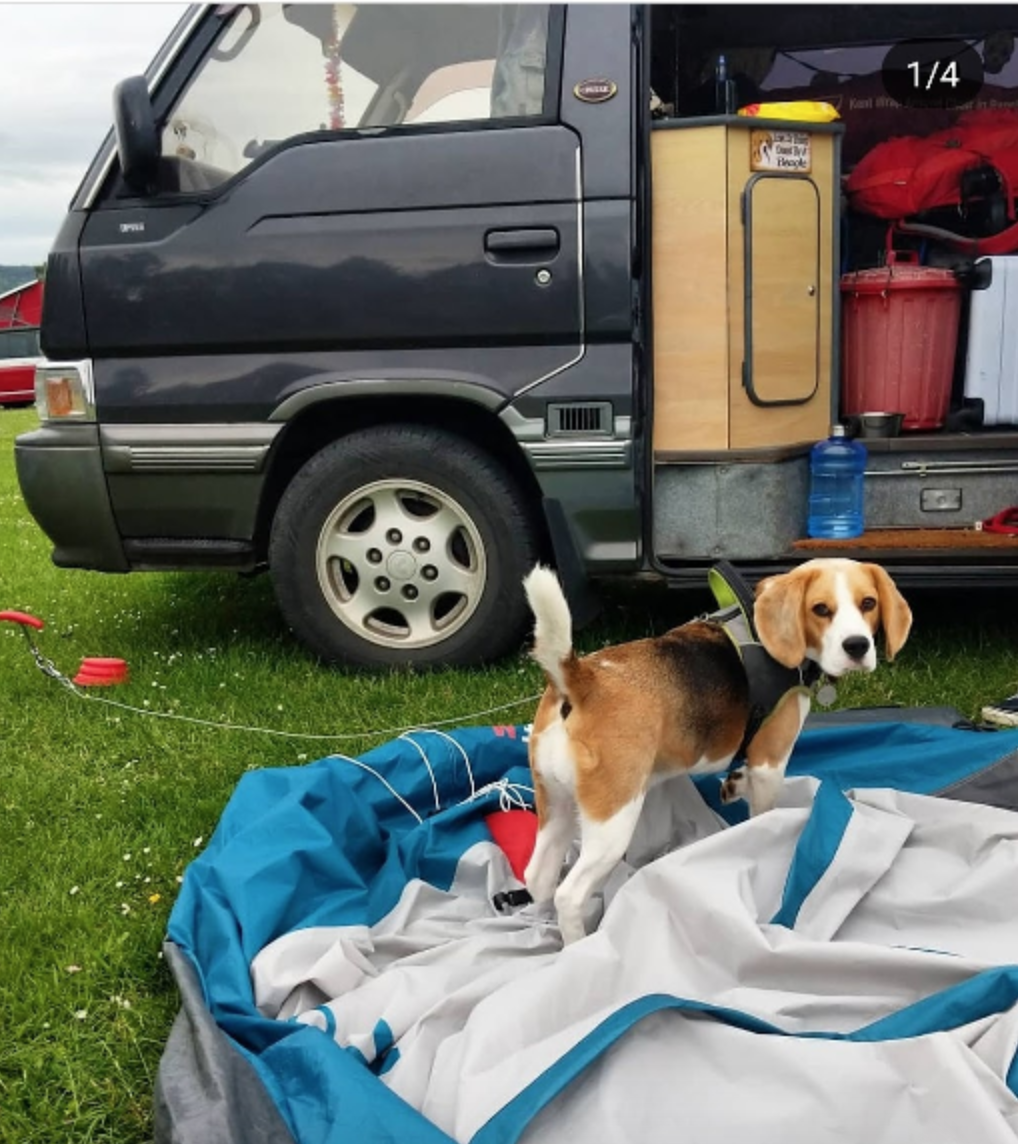CAMPING/TRAVELLING WITH DOGS IN HOT WEATHER
Hot sunny days are great - for us - but they can be so dangerous for your four-legged furry friends and it's heartbreaking that so many Dogs die from something that could have easily been prevented.
So, to help us 'pawrents' make sure we are aware of the dangers so we can keep them safe - I've collected and listed a few useful bits below; sourced from Pets at home and other various websites.
Before your trip:
- Give them a groom - they may not be able to take their coat off - but we can help 'thin it out' depending on the breed.
- Make sure you have everything you may need - for example, plenty of water, bottles and carriers, cool mats, bandanas, paddling pools and fans.
- Check/find out where the local vets are - quite a few pets at homes now have vets in the bigger stores, as well as there being various other vets 'chains'. If you're not registered as part of a chain - make sure you have your vets details and contact details on you in case you need them.
When travelling
- Remember to take it steady with plenty of shaded stops/breaks
- Ensure you have plenty of water accessible - not packed away so you can't reach it when you stop.
- Aircon - this can be great if you have it - however– be careful because if they get too adjusted they'll suffer when leaving the vehicle
- Windows and fans – these are great if the dog likes it - but our wander gets a bit nervy on main roads and hates the window being down so it's great to have a backup such as a cooling bandana/shade provider
- Car shades/covers - these are great if the dog is in the back, but not so great for the driver if in the front as they won't be able to see out the windows! On a recent trip we did we had to wrap Wander in a thin white cloth to shade her and reflect some of the heat.
- Front or back – Always think about where they are best positioned and ensure it's possible to swap/change if need be - eg sat up front with you may be great to start with as you have the cooling fans and windows, but they may also end up in direct sunlight. Whereas in the back with car shades /curtains drawn might start off cool and shaded but eventually heat up and they'll need/want fresh air.
When Camping/days out
- Cooling bandanas / vests are great - a normal bandana or shirt can suffice - just make sure it's light weight and soak it in cold water. Alternatively – pouring water down their chest and back of neck works a treat too
- Cool mats and shade tents are great too - especially if your dog likes them and uses them. We've started to try and teach Wander 'matt' to encourage and get her to use hers when she needs to.
- Pools, fountains and take them swimming
- Portable air con units/fans - we recently bought an ace mini air con unit that's battery-powered - review will be coming soon.
- Frozen treats - but be careful here as this can make your dog worse if already suffering and eaten too fast.
Remember...
If it's too warm - your dog more than likely won't want or need a walk. But if you do, take it steady, take plenty of water and to prevent burning your Puppa's pads, check the temperature of the floor by using the back of your hand and avoiding pavements or roads in really warm weather.
after all - we've all been there on holiday running across hot sand and black pavements and stone slabs etc also get hot!
It's also good to note, not to just be aware of high temperatures, but also of high humidity. As this can also cause heat exhaustion in dogs.
Now for the most important bit...
make sure you keep a lookout for and monitor:
- Panting – dogs pant to cool themselves down, this is normal. But excessive panting is not - if you think your dog is excessively panting - check out for the other warning signs below...
- Clicking – is usually caused by excessive panting - indicating that they are too warm
- Tongue and gums – If their tongue turns a brighter or darker colour than usual, then this could be a sign they’re too warm. Similarly, dry gums that become paler than normal can indicate their body temperature is too high. In severe cases – gums or a tongue can turn blue or bright red.
- Hyperventilation
- Drinking more than usual
- Glazed eyes
- Less responsive
- Vomiting and diarrhoea
- Excessive drooling
- A rapid heart rate
- Dizziness or lack of coordination
- Fever
- Lethargy
- Loss of consciousness
BUT – Remember, every dog is different and may not show the same symptoms.
You know your dog - so always have a good sense check and ask yourself "are they being their normal selves?" if they are not, and or are showing any of the above signs...
- Don't feed them ice cubes, this could cause their temperature to drop too quickly, leading to shock - ice cubes/chilled treats are more for fun and preventative not a cure.
- If they're willing to drink, give them cool, fresh water. But don't force it.
- I often find dipping my fingers in the water and letting wander lick it off helps get her started, and then I move on to scoops in the palm of my hand gradually lowering it closer and closer to her bowl. If they aren't drinking at all - phone a vet.
- Move your dog to a cooler area, either indoors where there is air conditioning or in the shade under a fan.
- If you're near water, let your dog take a dip to cool down. Otherwise, you can use cool, wet cloths or towels to help them out. Place your cool wet cloths on his neck, armpits, and between his hind legs, and you can also gently wet his ears and paw pads with cool water.
- Use a rectal thermometer to check their temperature. A dog's normal rectal temperature is approximately 38.3-38.7°C. Heat exhaustion typically occurs when a dog's temperature goes between 39 and 41°C degrees. A temperature above 41°C places them at risk for heatstroke. If he's in the danger zone, call your veterinarian.
- Get them to the vet. If you haven't already done so, call ahead so they can be ready to take immediate action as soon as you arrive.








